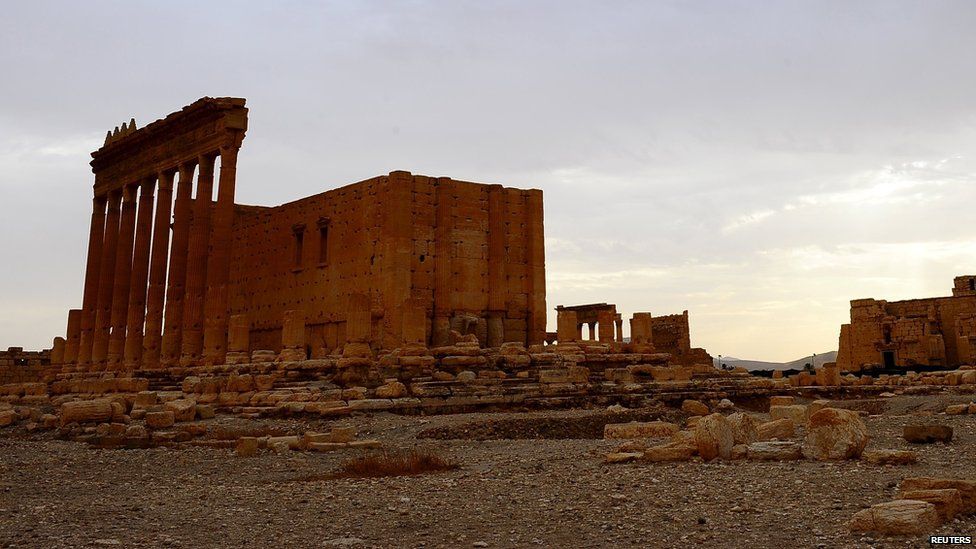Palmyra's Temple of Bel 'still standing'
- Published

Palmyra's ancient Temple of Bel is still standing despite an attempt by Islamic State (IS) militants to blow it up, Syria's antiquities chief has said.
Maamoun Abdulkarim confirmed there was a large explosion within its perimeter but said the basic structure of the 2,000-year-old site was intact.
But the extent of the damage is unclear with witnesses unable to get close to the temple.
Initial reports said the site had been partially destroyed.
Mr Abdulkarim, head of the Syrian Department of Antiquities and Museums, said "our information is provisional, but it indicates that any damage done was partial, and the basic structure is still standing".
Last week, IS blew up the much smaller Baalshamin temple at the site. However, Mr Abdulkarim says that the explosion at the Temple of Bel was "different" to the "huge quantity of explosives" used to destroy the Baalshamin.
However, he said they would have to wait for pictures to emerge as "witnesses can't get close enough to be sure what damage was done."
Historian Dan Cruickshank said any damage done by militants in Palmyra was ''an appalling loss''
It was several days after the initial reports of the destruction of the Temple of Baalshamin that IS itself put out pictures showing its militants blowing up the site.
One Palmyra resident earlier told the Associated Press news agency there had been "total destruction" at the Temple of Bel.
The UK-based Syrian Observatory for Human Rights monitoring group said parts of the ancient temple had been destroyed.
IS militants seized control of Palmyra in May, sparking fears for the World Heritage site.
The world-famous Greco-Roman ruins are in the desert north-east of the Syrian capital, Damascus.
The Temple of Bel is dedicated to the Palmyrene gods and was one of the best preserved parts of the ancient city.
IS has previously targeted historical sites in areas under its control in Iraq and Syria, regarding their ancient temples and sculptures as heretical.
Ancient city of Palmyra
- Unesco World Heritage site
- Site contains monumental ruins of great city, once one of the most important cultural centres of the ancient world
- Art and architecture, from the 1st and 2nd Centuries, combine Greco-Roman techniques with local traditions and Persian influences
- Site boasts a number of monumental projects, more than 1,000 columns, and a formidable necropolis of more than 500 tombs
- More than 150,000 tourists visited Palmyra every year before the Syrian conflict